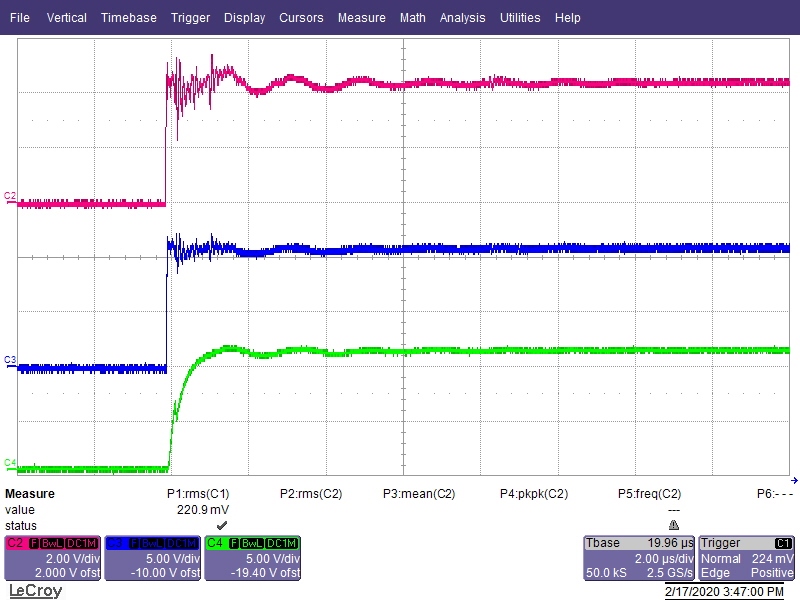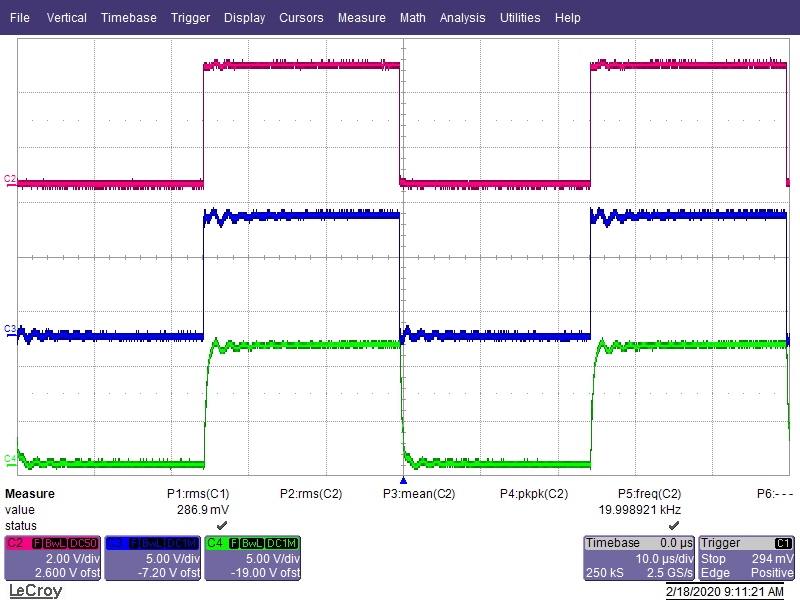Hi All,
I have recurrent failure problems with the subject IC. It is implemented in a motor control driver that works mainly in breaking modality transferring power from a three-phases PMA to a 28VDC load and battery.
At low load there aren’t problems, but increasing output and/or phase current sometimes a UCC27211D breaks off. Herein after some screen shots (red trace: low side gate signal shifted down of 4V, green trace: high side gate signal shifted down of 4V, ocher trace: PHA to Power Ground voltage (please refer to the enclosed schematic), blue trace: current outgoing PHA terminal and base schematic.
It is observed, at a certain point, that the high gate signal (detected directly on the pins of a mosfet), immediately after switching on the high side switch, drops sharply and reaches a value such as to bring the operation of the switch itself – one would say – in linear operation, but this is not explained since the current flowing in the PHA node (about 700A) flows in the switch towards the BUS+ terminal (from the Source towards the drain) and therefore you should still see the Vds of the high side switch rise to the voltage of BUS+ (battery voltage) minus the Vf of the body diode (give a look to situation of the previous PWM cycle).
In subsequent switching the driver behavior seems compromised and after about 1.5ms the final break of the bridge leg occurs.
As you can see in the schematic, the feeding of the upper sections is obtained by boostrap. The maximum modulation in the screens shown does not exceed 95% (the correct charging of the bootstrap capacitor is however guaranteed). The dead time is 2µs. The switching frequency is 20kHz. From the point of view of the PWM modulation pattern there are no errors.
Waiting for your opinion I thank you in advance.
Best Regards
Flavio













